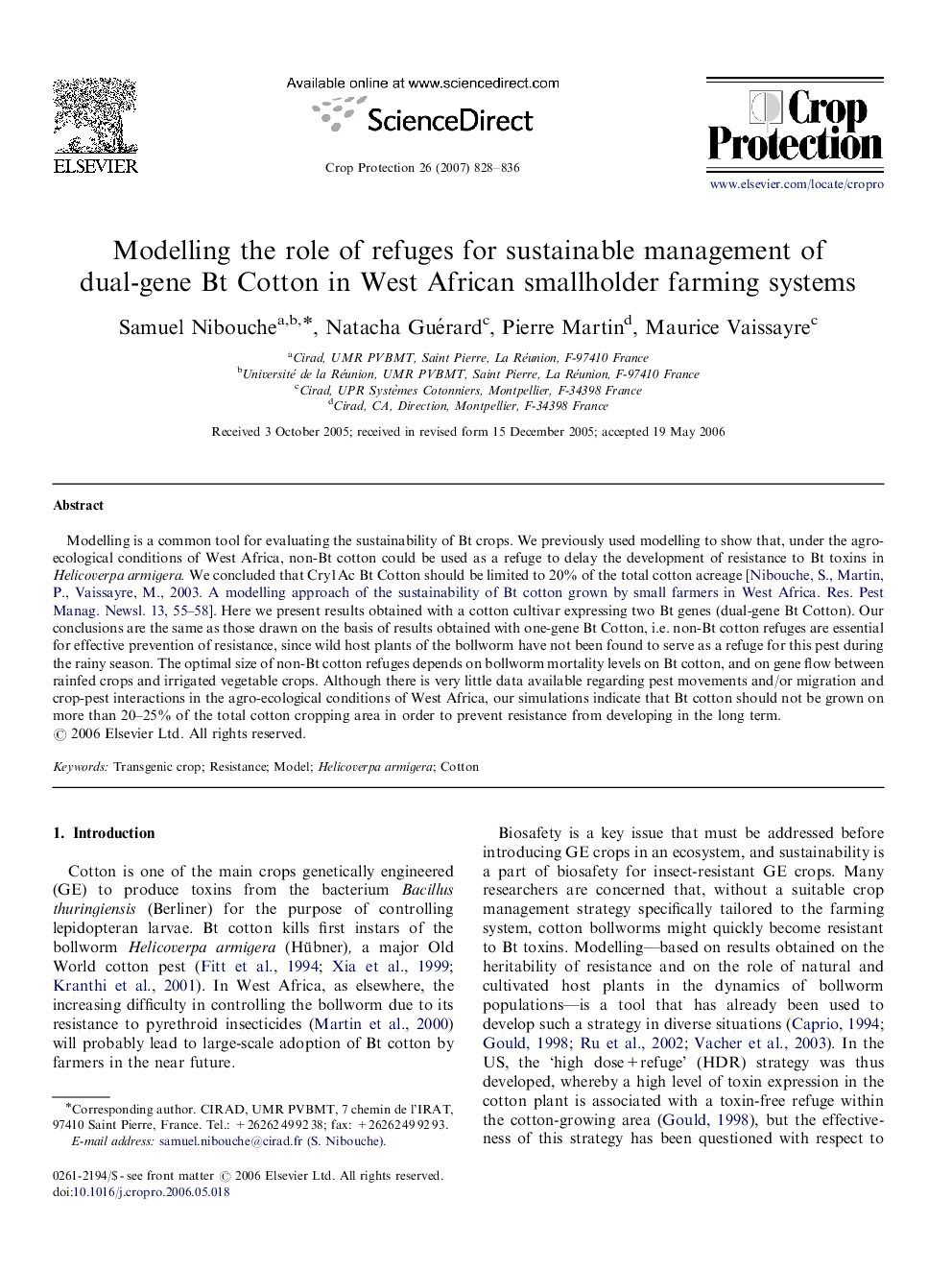| کد مقاله | کد نشریه | سال انتشار | مقاله انگلیسی | نسخه تمام متن |
|---|---|---|---|---|
| 4507738 | 1321381 | 2007 | 9 صفحه PDF | دانلود رایگان |

Modelling is a common tool for evaluating the sustainability of Bt crops. We previously used modelling to show that, under the agro-ecological conditions of West Africa, non-Bt cotton could be used as a refuge to delay the development of resistance to Bt toxins in Helicoverpa armigera. We concluded that Cry1Ac Bt Cotton should be limited to 20% of the total cotton acreage [ Nibouche, S., Martin, P., Vaissayre, M., 2003. A modelling approach of the sustainability of Bt cotton grown by small farmers in West Africa. Res. Pest Manag. Newsl. 13, 55–58]. Here we present results obtained with a cotton cultivar expressing two Bt genes (dual-gene Bt Cotton). Our conclusions are the same as those drawn on the basis of results obtained with one-gene Bt Cotton, i.e. non-Bt cotton refuges are essential for effective prevention of resistance, since wild host plants of the bollworm have not been found to serve as a refuge for this pest during the rainy season. The optimal size of non-Bt cotton refuges depends on bollworm mortality levels on Bt cotton, and on gene flow between rainfed crops and irrigated vegetable crops. Although there is very little data available regarding pest movements and/or migration and crop-pest interactions in the agro-ecological conditions of West Africa, our simulations indicate that Bt cotton should not be grown on more than 20–25% of the total cotton cropping area in order to prevent resistance from developing in the long term.
Journal: Crop Protection - Volume 26, Issue 6, June 2007, Pages 828–836